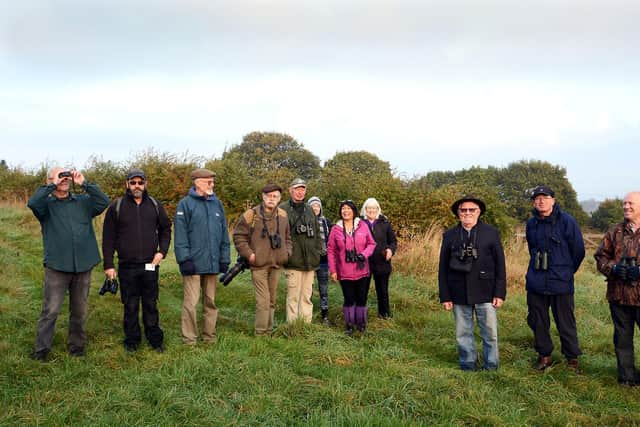Sheffield is a "really exciting city for access to wildlife" - let's celebrate it
and live on Freeview channel 276
“I’d set myself up on the opposite side of the street while families gathered on their front doorsteps, and I’d talk about the birds singing and appearing in the neighbouring trees. It seemed to go down well.” Said Pete.From late March to the beginning of May (when the dawn chorus was getting too early for the springwatching families) Pete loaned out his binoculars and offered weekly lockdown entertainment for adults and children with local birdwatching lore gathered from over 50 years of Sheffield ornithology.
Pete has just published his birdwatching memoir ‘The Northumbrian Garden Parrot’ (named after the exotic ‘parrot’ Pete’s neighbours found in their North Shields garden one November morning. Armed with his new Observer’s Book of Birds, 10 year old Pete announced the orange crested parrot was, in fact, a Waxwing, and his birdwatching career began).Over his 71 years, Pete has ticked off 325 birds in the UK, and dozens more around the world, but he still loves the ‘patch work’ where a keen naturalist gets to know the comings and goings of wildlife in a small local area.Pete’s patch is around Millhouses, and profits from sales of his book will help the Friends of Millhouses Park to raise £25,000 for a new climbing frame in the park.Since the start of lockdown, Pete and his wife Margaret have set out on a three and a half mile walk around Millhouses Park and Ecclesall Woods before breakfast virtually every morning.“And we’ve loved it,” he says. “It’s been a revelation.”
Advertisement
Hide AdAdvertisement
Hide AdFewer cars and people in the early spring meant he could hear more birdsong and spot the locations of nests, and discover previously unseen species like a pied flycatcher in the woods and a pheasant in Millhouses Park.“Margaret walks for exercise and I walk for both exercise and nature, and where we are we have such good access to woodlands and waterways, and by walking you see and hear so much more wildlife.”He took a similar approach on his regular commute to Handsworth Grange school, where he clocked up 16,000 miles on his bike over the years, and 20-30 bird species a day.“There was a therapy to cycling to and from school, and you’d see and take note of things you’d never see in a car, like the fox in the morning or the geese flying over.


"On one morning on Grange Lane a group of grey partridges took off from almost under my front wheel and gave me quite a shock. I’ll never see that again!”He notes how the UK’s wildlife has changed since his boyhood, with species like grey partridge and a host of farmland birds disappearing.“There are far fewer birds and insects now, and I think about my grandchildren, and how they’ll see less than what I saw when I was a child.”Other species have moved in, either due to climate change or thanks to determined and targeted efforts by conversation groups.
He says he encounters buzzards on almost every local walk these days, while the once rare bittern has retuned to some local waterways.And he says there’s hope in the growing call for ‘landscape scale development’ rather than a patchwork of nature reserves among areas hostile to wildlife thanks to heavy use of pesticides and insecticides.But there’s still lots to see in South Yorkshire, he says, and one of his proud achievements was the ‘Freebird’ year in 2016, where he used his free bus pass, his bike and his walking boots to traverse Sheffield and South Yorkshire to clock up 156 different bird species without using a car, raising £3,500 for Cancer Research UK in the process, and walking and cycling over 600 miles.As lockdown continues, Pete says: “We live in a really exciting city for access to wildlife, with a moorland fringe, waterways and woodlands from Ecclesall Woods to Bowden Housteads and Greno Woods to Woodhouse Washlands. Most people have wildlife a short walk from where they live, so let’s celebrate that.”
Contact Pete Brown on [email protected] to buy his book with profits going to Friends of Millhouses Park to help fund a new climbing frame in the park.